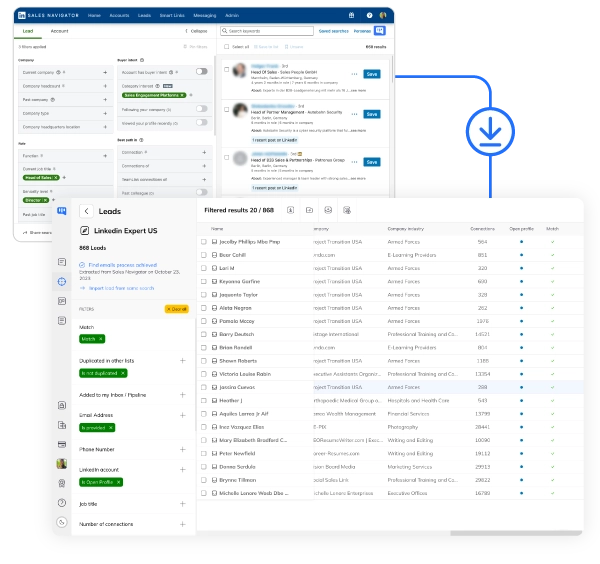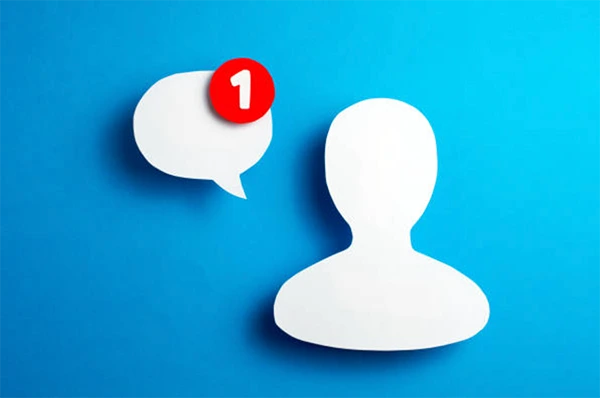Key B2B Sales Trends to Follow in 2024
With the rise of AI, ever-changing social media landscapes—LinkedIn at the forefront—and prospects becoming increasingly desensitized to often repetitive sales techniques, 2024 promises to be a year of revolution in prospecting and sales automation.
In this dynamic context, it's imperative to stay at the forefront of trends and new practices to ensure the competitiveness and effectiveness of your B2B strategies.
In this article, we've scoured the globe for sales trends to provide you with the best practices to follow in 2024 to boost your prospecting campaigns and stand out from the competition.
Automate, but Not 100%!
Today, we all receive emails and LinkedIn InMails every week, offering, in more or less personalized ways, to schedule a discussion.
The problem? This technique worked better because it relied on the gullibility of the prospects. Seeing that the email is addressed to them, that the name of their company or even their position is mentioned could suffice to give an impression of personalization.
This is no longer true today. For some years now, these Sales Automation approaches have been too commonly used to pass for personalization. Even the non-"initiated" know that it's mass prospecting, and no one feels guilty anymore about not responding to your kind LinkedIn InMail.
In 2024, salespeople must innovate and can do so by opting for two main options:
A/ Keep it Simple and Genuine
Hello Eugénie,
I appreciate the way your company helps small and medium-sized businesses grow by providing them with personalized growth strategies, advice, and training.
I understand that B2B appointment setting is an important focus for this year 2024.
For the past three years, we have been assisting around fifty executives in their multichannel prospecting (email, LinkedIn...).
We succeed in generating dozens of leads per month.
I propose we discuss your prospecting and present our services.
👉 Here is my calendar to discuss.
B/ Put in a Little More Effort by Truly Personalizing
Custom fields are a start, but if you really want to stand out, it's good to return to an even more qualitative approach.
Between cold calling and basic Sales Automation, there's a range of possibilities thanks to segmentation of your automations.
What does that mean?
For example, if you manage your scraping via Kanbox, you'll get a list of LinkedIn profiles and contacts based on Sales Navigator filtering criteria.

You then need to check in your list for information to ensure there are no errors in the segmentation (there always are): Is the sector the right one? Is the company the one the person works for or a "side project" they mentioned on LinkedIn? Does their position match your targeting?
Then, you can enrich your segmentation using Kanbox's Kanban Pipelines.

This way, you'll be able to:
- Add tags to more specifically classify prospects after your verification
- Add granularity to your segmentation based on the information retrieved for each profile (how long they've been working in the company? Add a segment based on their job description, etc.)
- Create icebreakers or templates that are not only related to the targeted market but to the person themselves, their experience, the type of products OR service they sell/represent, etc.
For example, it's already a good practice to use a personalized icebreaker based on the market, company, or targeted position. So you might see InMails starting with “The pet market is constantly innovating” or “Your role as Marketing Manager involves managing various skills within your team”.
But if you could say “After over 5 years of managing your marketing teams to develop and implement innovative best practices that have positioned you as a leading company in the high-end pet food retail market”, you're going even further and personalization truly meets automation.
In essence, the idea is to spend a little more time on building your Outbound LinkedIn and Emailing campaigns to truly stand out and overcome the feeling of "mass prospecting" that your prospects will have from these messages. The goal is to use "mass" tools much more specifically.
And if you're still hesitant? Know that this will then be very useful for continuing to follow up with your prospects, since you will have already been able to segment them enough to treat them personally and know what their specific challenges and issues are.
Also, Consider Organizing and Partially Automating Follow-Ups or Re-engagements after Initial Contact
Currently, Sales conduct nice LinkedIn and Email automation campaigns, then focus on people who respond positively to them. Few tools allow for the automatic management of ongoing exchanges with prospects who say "later" or "I'll be interested in 6 months" or even "No thanks, I'm busy but I'll come back to you if needed".

Yet, these people haven't said no. They haven't closed the door.
The most serious salespeople will know how to reach out to these contacts again through their flawless organization and the fact that they manually add them to their global CRM. But those who don't (and there are many) or who don't have a robust CRM to take over, often simply never attempt to contact these prospects again.
A tool like Kanbox allows you to classify different prospects according to their response type in Kanban Pipelines and use the Reminders feature which allows you to put conversations on hold to remind you of them at a later date. You won't have to sift through your LinkedIn messages to know who you need to contact again and when because Kanbox will automatically notify you of these reminders.
In 2024, it's good to see your Sales campaigns through to the end, and it would be a shame not to use SaaS tools and technology to help you organize better.
Commercial and Marketing Alignment Strategy
According to a HubSpot study, the main solutions to Sales challenges lie in a retention strategy and alignment between sales and marketing for 40% of companies.

This strategy improves synergy between teams to ensure consistent and effective communication. It enables the development of a more relevant strategy to generate leads and boost sales.
According to LinkedIn, companies with strong
alignment between their sales and marketing teams see a 20% higher annual revenue growth. A strong alignment ensures consistent communication with the customer, optimizes the sales cycle, and strengthens the overall effectiveness of campaigns.
It's time for marketing to create robust personas and to think about the needs and responses that your company offers to communicate with sales about possible creative ideas, approaches, or tools that could boost the effectiveness of your campaigns.
For example, a landing page addressing the contacted "Persona" often helps your prospect feel listened to and involved and can effectively increase your lead conversion rate.
Sector-Specific Marketing
This approach targets clients and prospects by industry. This allows for campaign personalization and increases effectiveness by addressing the specific needs of each sector.

But when we say "sector-specific," we mean "ultra-fine sectorization." Your prospect isn't in the SaaS market. They offer prospecting software, influence management, etc...
The filters and sectoral segmentation of LinkedIn and Sales Navigator are largely insufficient. You need to go further.
A Gartner survey reveals that companies using sector marketing strategies increase their conversion rates by 10%. Sector marketing allows for more advanced personalization, a better understanding of sector-specific needs, and targeted communication.
Marketing and Sales Automation
Marketing automation linked to Sales refers to the use of software to automate prospecting and marketing tasks related to it (retention, nurturing, influence). This includes actions such as email sending, network management, and lead tracking.

It's worth noting that companies automating lead nurturing see an increase of 10% or more in revenue opportunities over 6-9 months. Automation facilitates lead management, improves customer follow-up, and optimizes marketing campaign effectiveness.
AI-Based CRMs
Customer Relationship Management (CRM) systems integrating artificial intelligence can provide advanced analytics, better customer segmentation, and more precise predictions about customer behavior.

Salesforce reports that using AI in a CRM can increase sales by up to 29% and productivity by up to 34%. Integrating AI into CRMs allows for better data analysis, more accurate sales forecasting, and increased customization of customer interactions.
If you're looking to improve your conversion rate or if you're aware of the importance of constantly renewing yourself when it comes to B2B sales prospecting, then it would be good to test some or all of these practices.
Adopting these trends will help maximize your sales effectiveness in 2024. The key lies in personalized experience, intelligent automation, and strategic alignment between marketing and sales.
Generate 5X More Leads with Kanbox
Automate LinkedIn tasks and boost lead generation. Achieve 5X higher conversion rates.
Streamline Your Prospecting
Say goodbye to the tedious manual work and hello to a more efficient workflow. With Kanbox, you can focus on what truly matters: building relationships and closing deals.
Boost Your LinkedIn Sales
Forget repetitive tasks and save time to close more deals.
Schedule. Track. Close.
Kanbox handles your messages, follow-ups, and interactions effortlessly. Take action today.



